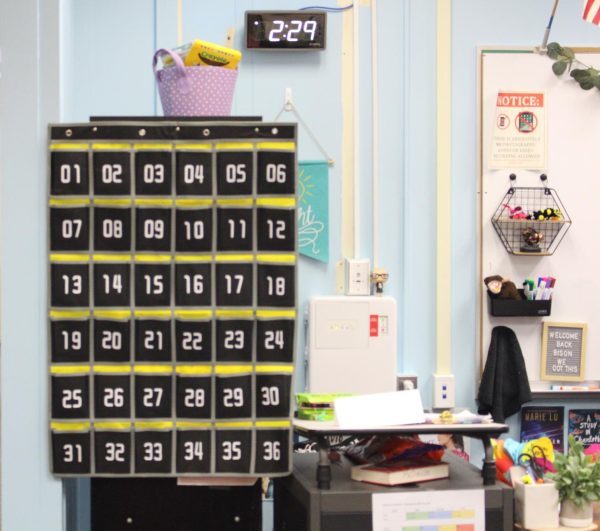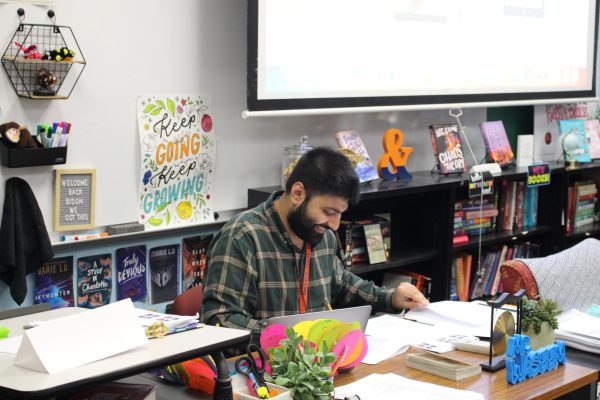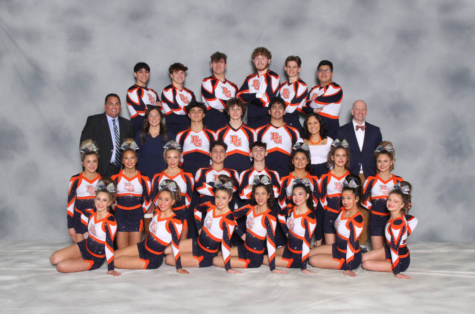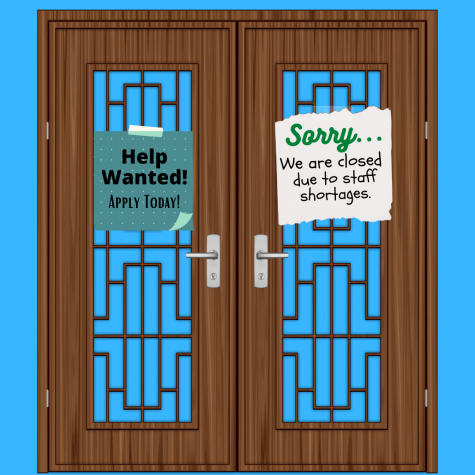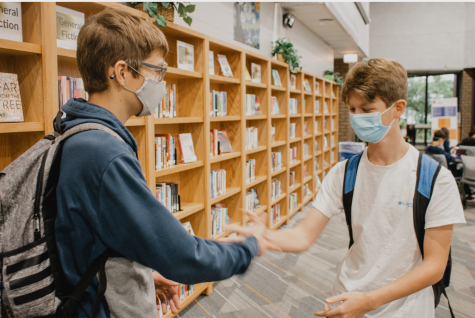Hybrid learning incites varied opinions regarding safety
Students line up to attend the first day of in-person learning.
On Oct. 15, students and staff members entered the third stage of District 214’s return-to-school plan: hybrid in-person instruction. This method splits the student body into three groups. Members of each group are given the option to attend in-person school in shifts, giving each group the opportunity to attend two days of school—one orange day and one blue day—per rotation. In-person instruction is optional for students, potentially benefiting those who have encountered challenges during remote learning.
“I’ve really struggled with group projects,” senior Drew Goldberg said. “It’s hard because you can’t talk to others online as easily as you would at school.”
Goldberg is returning to school to reap the academic benefits of in-person instruction. He is hoping to work more closely with his peers and teachers than he did over Zoom, he said.
“Some of my classes are very hands-on,” he said. “I think that going back to school is going to make them a lot easier and make more sense.”
These advantages are not the only reason District 214 decided to enter the third stage of its return-to-school plan, associate principal Robert Hartwig said. The shift occurred because the COVID-19 infection rate in Cook Country remained under 70 per 100,000 people for 10 consecutive days. This benchmark has been a safety requirement for the district to enter the third stage for over a month.
The school is also following safety protocols set by the Illinois Department of Public Health and the Centers for Disease Control and Prevention. All desks will be spaced 6 feet apart, and students and staff members must wear masks when inside except for in designated eating areas.
Hallways will be one-way to avoid as much contact as possible, and students will be offered sanitizer to clean their desks before use. Students and staff members will also have their temperatures taken and be asked if they have experienced any COVID-19 symptoms prior to entering the school. Students will also be given ID badges listing their homeroom and lunch period.
“We’re going above and beyond to make sure that the environment for everybody, whether you’re a staff member or a student, is the safest environment that we can make it for you,” Hartwig said.
Many students are choosing to remain remote due to safety concerns despite these protocols. Junior Abby Wight is one of these students.
Wight is diagnosed with asthma and mast cell activation syndrome. Asthma is a condition in which a person’s airways can become inflamed, making it difficult to breathe, and mast cell activation syndrome is a condition in which a person experiences repeated episodes of the symptoms of anaphylaxis. These conditions impair Wight’s immune system and could put her at a higher risk if diagnosed with COVID-19.
“If I didn’t have these conditions, I would have considered going back to school more,” Wight said. “They’ve definitely played a part in my decision to stay home.”
Another common concern about the return to school is the staff members’ ability to teach a hybrid classroom while simultaneously paying attention to both online and in-person students. But this concern may not be founded in fact, Hartwig said.
“We have some very solid teachers,” he said. “If you were to ask them, they’re probably going to think they’re not up to their usual standard, but from our standpoint, they’re doing really well and working with the kids very well.”
Many students have also expressed concern about the social aspect of returning to school, Goldberg and Wight said. Both students miss seeing their friends and the sense of normalcy that came from talking to them at school everyday. It can be difficult to remember that in-person school will look very different than it looked prior to COVID-19, Wight said. Between the number of students per group and safety protocols, in-person school may feel like a different experience.
“I feel like a lot of people are going back to school for a social aspect that isn’t even going to be there,” Wight said. “We’re all wanting to go back to this normal school, and it just isn’t going to be that.”


